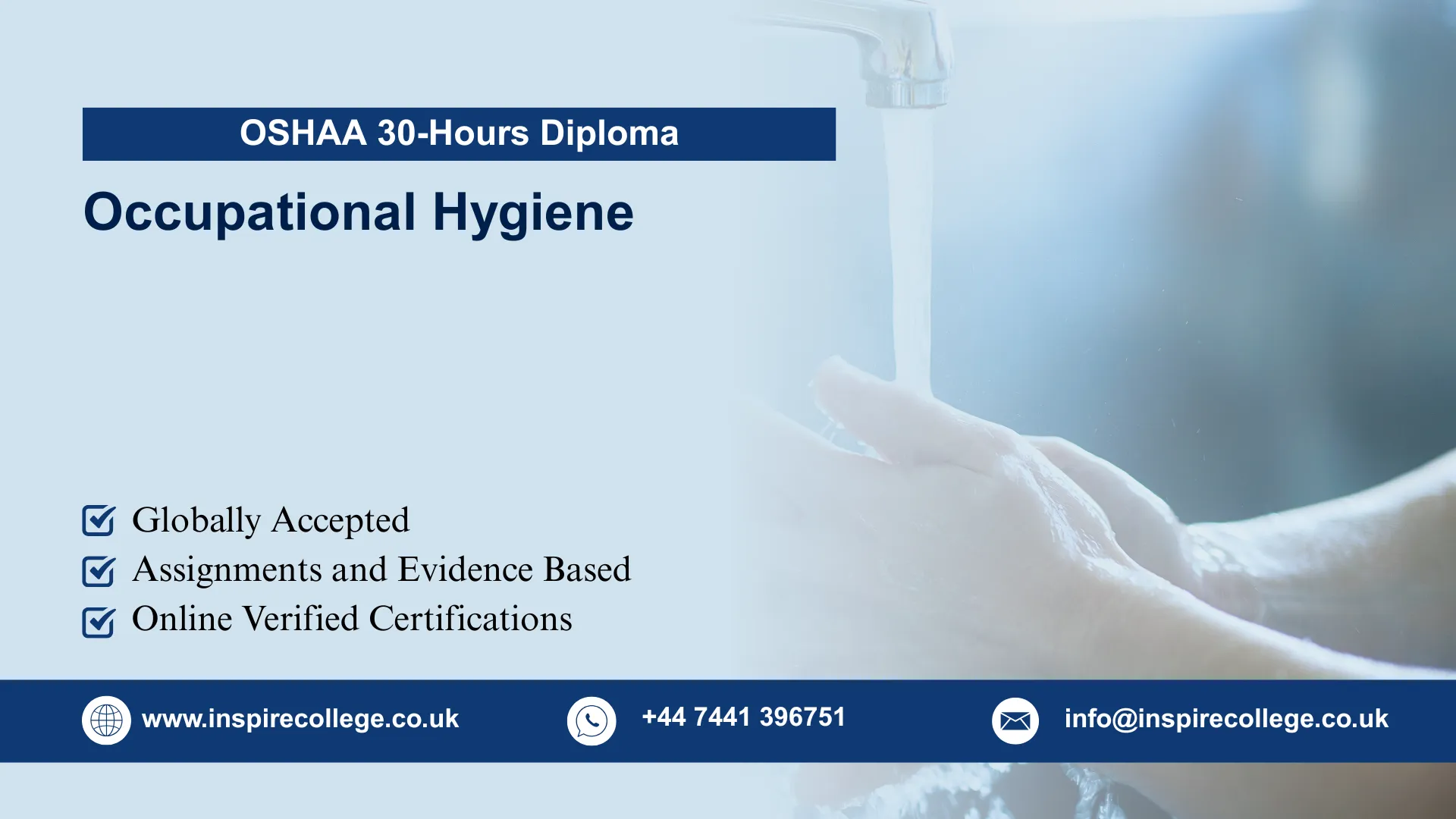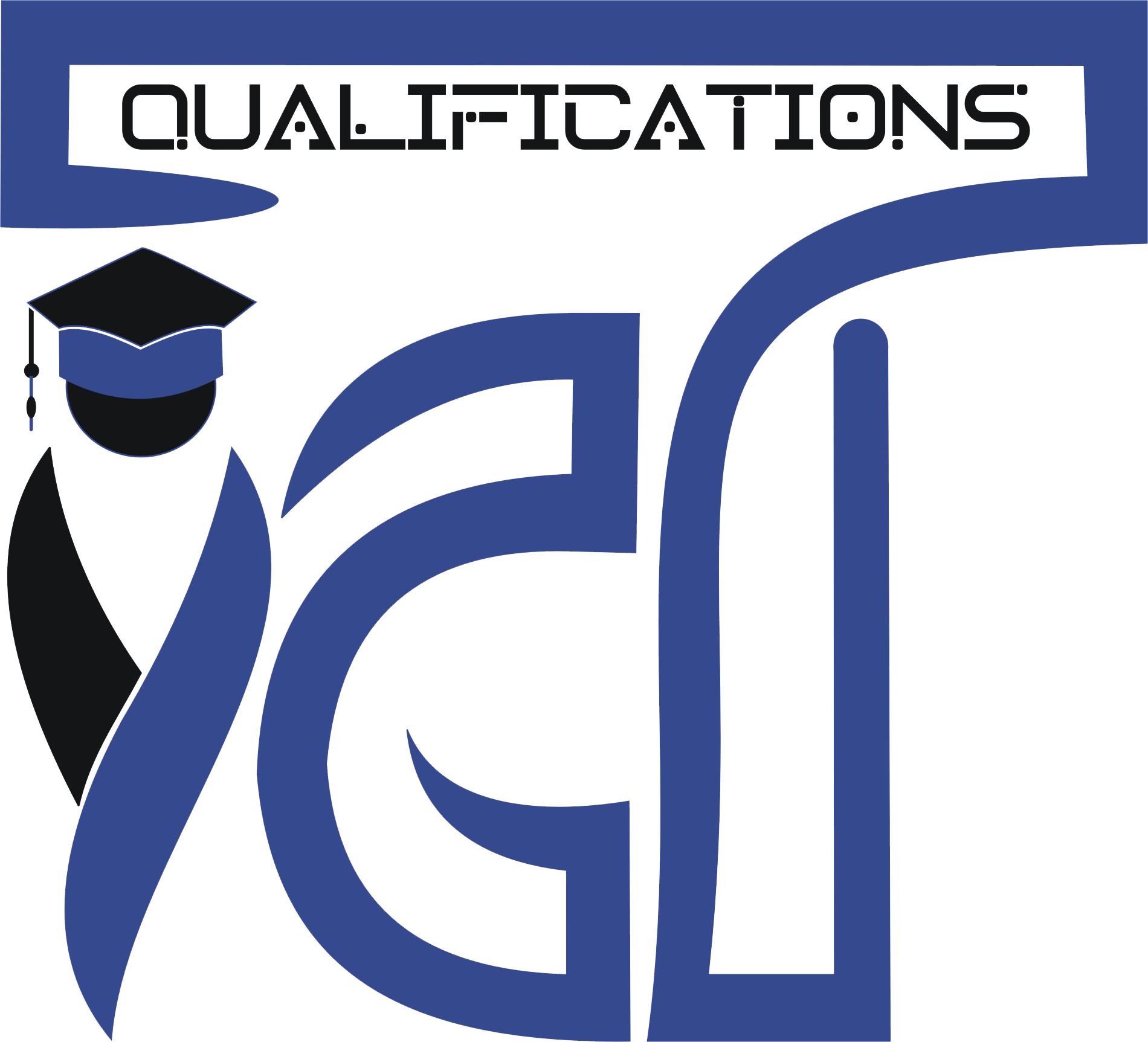
OSHAA 30-Hours Diploma in Occupational Hygiene
Occupational hygiene is a critical discipline that ensures the health, safety, and productivity of the modern workforce. With rising global concerns about workplace hazards, compliance, and employee well-being, organizations increasingly require trained professionals who can identify, evaluate, and control occupational risks. The OSHAA 30-Hours Diploma in Occupational Hygiene has been carefully designed to address these needs, equipping learners with the knowledge and skills required to create safer and healthier workplaces.
The OSHAA 30-Hours Diploma in Occupational Hygiene offers a thorough and practical overview of essential occupational hygiene principles. The program covers the identification and management of chemical, biological, and physical hazards, alongside workplace risk assessment, exposure monitoring, and the implementation of effective control measures. Learners will gain hands-on knowledge in the design and management of ventilation systems, proper use of respiratory protection, ergonomic workplace design, and the selection and application of personal protective equipment (PPE). In addition, the course provides comprehensive insight into the legal and regulatory frameworks governing occupational health and safety, equipping participants with the skills to apply international standards and best practices in real-world workplace environments.
By completing the OSHAA 30-Hours Diploma in Occupational Hygiene, participants will develop comprehensive competence to systematically recognize, evaluate, and manage workplace hazards. Learners will gain the ability to conduct thorough risk assessments, interpret exposure data, and implement evidence-based control measures that comply with international occupational health and safety standards. The program emphasizes practical applications throughout, ensuring that learners can apply theoretical knowledge to real-world workplace scenarios. Graduates will be prepared to address challenges across a wide range of industries, including manufacturing, construction, healthcare, and engineering, enabling them to improve worker health, enhance productivity, and foster a strong culture of safety.
The OSHAA 30-Hours Diploma in Occupational Hygiene is specifically designed for safety officers, industrial hygienists, environmental health and safety (EHS) professionals, supervisors, and managers who are dedicated to advancing their careers and strengthening workplace safety practices. This diploma equips learners with the knowledge and practical skills necessary to identify, assess, and control occupational hazards across a variety of industries, including manufacturing, construction, healthcare, and engineering. Beyond enhancing professional competence, the program supports Continuing Professional Development (CPD), enabling participants to stay current with the latest occupational hygiene standards and best practices.
To ensure that learners are well-prepared and able to fully benefit from the OSHAA 30-Hours Diploma in Occupational Hygiene, the following entry requirements must be met:
- Age Requirement
- Applicants must be at least 18 years of age at the time of enrollment.
- This ensures learners possess the maturity and responsibility needed to engage in professional training.
- Educational Requirements
- A minimum of a high school diploma or equivalent qualification is required.
- Applicants with prior studies in health sciences, biology, chemistry, engineering, or occupational safety will have a strong academic advantage.
- Additional certifications in workplace safety, environmental studies, or compliance management are considered beneficial.
- Professional Experience
- While prior work experience is not mandatory, it is highly recommended.
- Ideal candidates include safety officers, supervisors, EHS practitioners, industrial hygienists, and technical staff involved in workplace compliance.
- Previous exposure to occupational safety, hazard control, or environmental health enhances understanding of course materials.
- Technical Skills
- Basic computer literacy is required, including the ability to use email, online learning platforms, and workplace documentation systems.
- Familiarity with tools such as Microsoft Word, Excel, and PowerPoint will be advantageous for assignments and reporting tasks.
- Motivation and Commitment
- Learners must demonstrate a genuine interest in occupational hygiene, workplace safety, and hazard management.
- Commitment to completing 30 hours of structured study, including theoretical and practical applications, is required.
- Strong dedication to personal and professional development is expected, particularly for those seeking Continuing Professional Development (CPD).
- English Language Proficiency
- Good proficiency in written and spoken English is necessary.
- Candidates should be able to understand technical terminology, workplace safety regulations, and occupational health documentation.
- The ability to prepare reports and communicate effectively in English will be essential for success.
Mandatory Units
The OSHAA 30-Hours Diploma in Occupational Hygiene, to achieve the qualification candidates must complete all the mandatory units form the following :
Mandatory Units
- Introduction to Occupational Hygiene and Workplace Hazards
- Principles of Hazard Identification and Risk Assessment
- Chemical and Biological Hazard Control Strategies
- Air Quality, Ventilation, and Respiratory Protection
- Noise, Vibration, and Occupational Health Risks
- Ergonomics and Workplace Design for Injury Prevention
- Exposure Monitoring, Sampling, and Assessment Techniques
- Legal and Regulatory Frameworks for Occupational Hygiene
The OSHAA 30-Hours Diploma in Occupational Hygiene is designed to provide learners with practical knowledge, technical expertise, and professional skills to identify, evaluate, and control occupational hazards in diverse workplace environments. By the end of the course, learners will be able to apply internationally recognized occupational hygiene principles to safeguard employee health, improve workplace safety, and ensure compliance with global standards.
1. Introduction to Occupational Hygiene and Workplace Hazards
- Explain the scope, role, and importance of occupational hygiene in workplace health and safety.
- Define workplace hazards and distinguish between different categories (chemical, physical, biological, and ergonomic).
- Recognize how occupational hygiene contributes to long-term worker health and organizational productivity.
2. Principles of Hazard Identification and Risk Assessment
- Apply systematic methods to identify workplace hazards.
- Conduct risk assessments using recognized international frameworks.
- Prioritize hazards based on severity, likelihood, and potential health effects.
- Recommend appropriate strategies to reduce or eliminate identified risks.
3. Chemical and Biological Hazard Control Strategies
- Identify different types of chemical and biological hazards found in workplace environments.
- Assess health risks associated with exposure to hazardous substances, microorganisms, and infectious agents.
- Design and implement effective control strategies, including substitution, engineering controls, and safe handling practices.
- Promote awareness and compliance with hazard communication systems such as Safety Data Sheets (SDS).
4. Air Quality, Ventilation, and Respiratory Protection
- Analyze workplace air quality and evaluate sources of contamination.
- Differentiate between local exhaust ventilation and general dilution systems.
- Recommend ventilation systems that meet industry standards.
- Select, fit-test, and manage respiratory protective equipment based on exposure needs.
5. Noise, Vibration, and Occupational Health Risks
- Recognize the health effects of noise and vibration exposure on workers.
- Conduct workplace assessments for noise levels and vibration risks.
- Implement preventive and corrective measures, including engineering and administrative controls.
- Recommend monitoring programs to comply with occupational health standards.
6. Ergonomics and Workplace Design for Injury Prevention
- Apply ergonomic principles to workstation design and manual handling tasks.
- Identify risk factors for musculoskeletal disorders and repetitive strain injuries.
- Propose workplace interventions to reduce physical strain and fatigue.
- Integrate human factors into workplace design to enhance safety and performance.
7. Exposure Monitoring, Sampling, and Assessment Techniques
- Demonstrate knowledge of exposure monitoring methods for chemical, biological, and physical hazards.
- Use appropriate sampling techniques to collect workplace data.
- Interpret results to evaluate employee exposure against occupational exposure limits (OELs).
- Recommend evidence-based control measures based on assessment findings.
8. Legal and Regulatory Frameworks for Occupational Hygiene
- Interpret national and international occupational hygiene standards and regulations.
- Evaluate the responsibilities of employers and employees in maintaining workplace safety.
- Develop workplace policies and reporting systems that align with legal requirements.
- Apply compliance strategies to ensure adherence to occupational health legislation.
The OSHAA 30-Hours Diploma in Occupational Hygiene is designed for professionals who are committed to improving workplace health and safety. It is best suited for individuals who already have a foundational understanding of occupational health, safety, or compliance and are seeking to enhance their technical knowledge and practical skills in hazard identification, risk assessment, and control strategies. This course is ideal for learners who wish to advance their careers, strengthen workplace safety standards, and implement evidence-based occupational hygiene practices.
This diploma is particularly suitable for:
- Safety officers, industrial hygienists, and occupational health practitioners seeking advanced skills in hazard identification, assessment, and control.
- Environmental Health & Safety (EHS) professionals responsible for monitoring workplace health and safety compliance.
- Supervisors, managers, and engineers working in industries with chemical, biological, or physical hazards.
- Human resources and compliance managers overseeing occupational health initiatives.
- Graduates and professionals from health sciences, environmental studies, engineering, or related fields who wish to specialize in occupational hygiene.
- Individuals committed to Continuing Professional Development (CPD) and ongoing professional growth in workplace safety.
Learners enrolling in this diploma are expected to be motivated, detail-oriented, and proactive in applying occupational hygiene principles in real-world settings. By the end of the program, they will be equipped to implement practical safety interventions, enhance risk management practices, and contribute to a safer, healthier, and more productive workplace environment, aligning with international occupational health and safety standards.
Register Now
OSHAA 30-Hours Diploma in Occupational Hygiene






